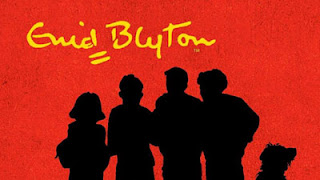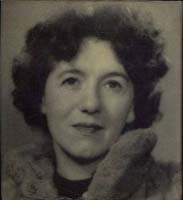

‘What Blyton did as a writer was brilliant,’ she says, crisply, ‘even if she didn’t fulfil her potential and, towards the end, began to repeat herself. She too has her share of Blyton bric-a-brac (notably the original drawings of Noddy, Big Ears and their friends from Toyland) and admiration for her mother’s achievement. (I am sorry she is reluctant to be photographed because she is rather beautiful and looks much younger than her years.) She lives in an airy first-floor flat in Clapham, south London, has an MA in psychotherapy, and works as a counsellor for the mental health charity, MIND. She is taller, slimmer, spikier, more contemporary in manner, more metropolitan in attitude. She too is a widow, mother and grandmother, who has taught and worked with young children, but if Gillian is an archetypal cosy granny in the apple-cheeked Blyton tradition, Imogen is more a Roald Dahl creation. Imogen, Gillian’s younger sister, 66, tells a different story. She was a fair and loving mother and a fascinating companion.’ She could communicate with children in a quite remarkable way, and not just on the page.


I didn’t have the imagination or skill to write as she did, but I may have inherited some of her gifts as a teacher. She says, ‘My mother gave me the belief that whatever talents you have you must use them. She has all the characteristics of an old-fashioned primary school teacher, which, of course, is what she has been. Gillian has a deep, warm voice and speaks in formal sentences, with wonderful diction and appropriate emphasis. After a tasty lunch (served with a delicious Rioja) she puts my coffee on Enid Blyton’s side table: ‘Yes,’ she says, proudly, ‘the very table at which she created The Famous Five’. Gillian, the older daughter, 70 when i meet her, a widow, mother and grandmother, living in a fine house on the edge of Ilkley Moor, with her twelve-year-old golden retriever, Bruce, surrounded by a mass of Blyton memorabilia. Independently, but in the same words, they tell me, ‘It’s easier this way.’ These days, the sisters neither see nor speak to one another. Once upon a time, when they were little girls, and their mother was the J K Rowling of her day, they were photographed together constantly, playing in the sandpit, laughing on the lawn, curled up together at their mother’s knee. I am meeting Miss Blyton’s daughters – her only children - separately, because to meet them together would not be possible. I am talking to the daughters of Enid Blyton, the world’s most prolific children’s author (700 titles: 600 million copies sold still, today, a worldwide bestseller, available in 42 languages, around the globe) whose first book, Child Whispers, was published almost century ago. ‘Enid Blyton? She was a wonderful mother.’ ‘Enid Blyton? She wasn’t a mother at all.’

About seventeen years ago, in search of the truth about Enid Blyton, I went to interview her daughters - and what I discovered may surprise you. Millions knew - and know - her stories - but who was Enid Blyton? What was she like? What was she really like? I never met her, but as a boy I loved her books and, when I grew up and had my own children and began writing children’s stories myself, I wanted to find out more about this phenomenon - so prolific, so popular, and, in certain quarters, so controversial. She was also the author who introduced millions of children to the joys of reading as the creator of Noddy and Big Ears, of The Famous Five and The Secret Seven, of Mallory Towers, and of my favourite book as a child: The Magic Faraway Tree. Certainly Enid Blyton was a writer who reflected her time: she was born in 1897 and died in 1968. It has just been revealed that in 2016 the Royal Mint blocked a proposal to honour the celebrated children’s author with a commemorative 50p coin on the grounds that Blyton - the world’s most popular children’s author - was ‘a racist, a sexist and a homophobe’ and the Royal Mint feared a backlash.


 0 kommentar(er)
0 kommentar(er)
